Under the strict regulations in Europe, it’s interesting to note that Toyota has managed to keep its emission levels within the required limits solely relying on HEVs without relying on new energy vehicles. In contrast, most European carmakers are far from meeting the requirements set for 2021. Let’s take a closer look at the details.
Emissions situation for January and February
As shown in the table below, BMW currently has the best emissions record, with a carbon emission deficit of -3 grams in NEDC mode (which is achieved based on a PHEV penetration rate of 16%). By comparison, Volkswagen is currently falling short of the required levels.
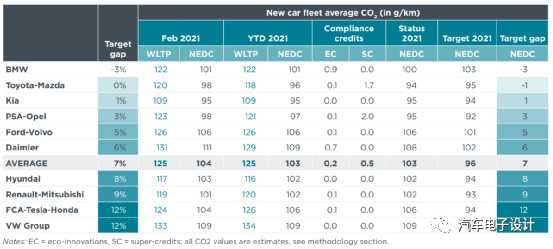
This is due to Volkswagen’s low new energy vehicle penetration rate of just 12%, with BEVs and PHEVs accounting for a total of 6% each. Meanwhile, Toyota’s new energy vehicle penetration rate is only 3%, with 1% for BEVs and 2% for PHEVs. We can see that European carmakers need to reduce emissions levels while maintaining their current fleet of fuel cars, relying on higher penetration rates of new energy vehicles. For example, Kia has a new energy penetration rate of 22%, with an emissions deficit of only 1 gram per kilometer, while Hyundai lags behind with a penetration rate of only 11%, resulting in an 8-gram deficit. The only carmaker with a particularly low proportion of new energy vehicles is Toyota, yet it is still in a favorable position. How did Toyota manage to achieve this?
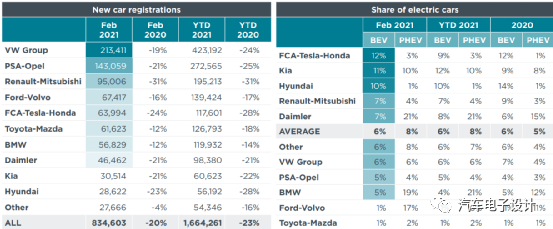
Toyota’s HEV strategy
Toyota sold 993,000 vehicles in Europe last year and has had a solid start in the first quarter of this year, with its market share increasing from 6% in 2020 to 6.6%, with sales of 287,000 vehicles (not too affected by chip shortages). In both sets of data, we can see that the number of hybrids sold is very high, with 529,000 sold last year and 159,000 sold in Q1 alone.
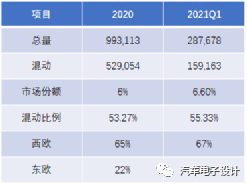
In Europe, Toyota is already mostly relying on HEVs, with a hybrid penetration rate of 55.33% overall, including a hybrid penetration rate of 67% in Western Europe and a lower rate of 27% in Eastern Europe. Nevertheless, this figure is still very impressive, allowing Toyota to achieve a high penetration rate from a carbon emission perspective. As for specific models, …## Small and Medium-Sized Cars
Toyota has realized almost complete hybridization on small SUVs like C-HR, while still offering two gasoline cars, Yaris and Corolla, priced around 130,000 RMB. In the compact SUV RAV4, Toyota Hybrid Electric Vehicle (HEV) has become more popular than gasoline cars.
Mid-Size and Large Cars
The mid-size and large car segment is where Toyota has been slower to introduce hybrid vehicles. Compared to Toyota, many European car manufacturers have invested more into Plug-in Hybrid Electric Vehicles (PHEV), but Toyota’s approach of equipping bigger batteries to improve HEV performance is still appropriate.
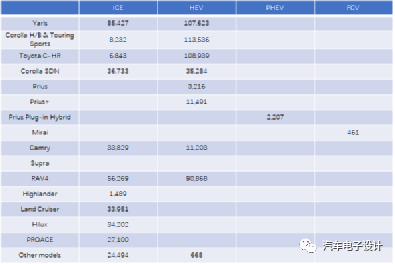
Toyota’s progress in Q1 2021 reinforces what is shown in the table. Hybrid Electric Vehicles are gradually replacing gasoline cars in the larger car segment, particularly since the hybridization of Highlander. Therefore, Toyota’s ratio of PHEV to BEV in Europe is very low in comparison.
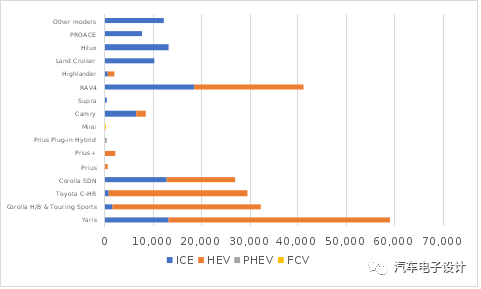
Lexus, on the other hand, penetrated the European market at a rate of 62%, with Western Europe reaching 92% (this is approximately equivalent to selling only hybrid versions). The approach provides concrete data on carbon emissions.
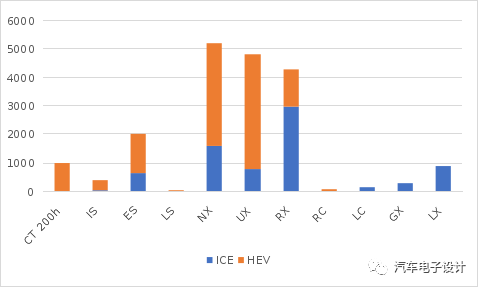
Conclusion
Looking at Toyota’s case, achieving high hybridization or high BEV penetration rates is essential to meeting strict emissions regulations. Without a foundation of at least 50%, the effect is not good. Therefore, in the next 2-3 years, we may see a significant hybridization of gasoline cars in China to achieve negative fuel consumption.
This article is a translation by ChatGPT of a Chinese report from 42HOW. If you have any questions about it, please email bd@42how.com.